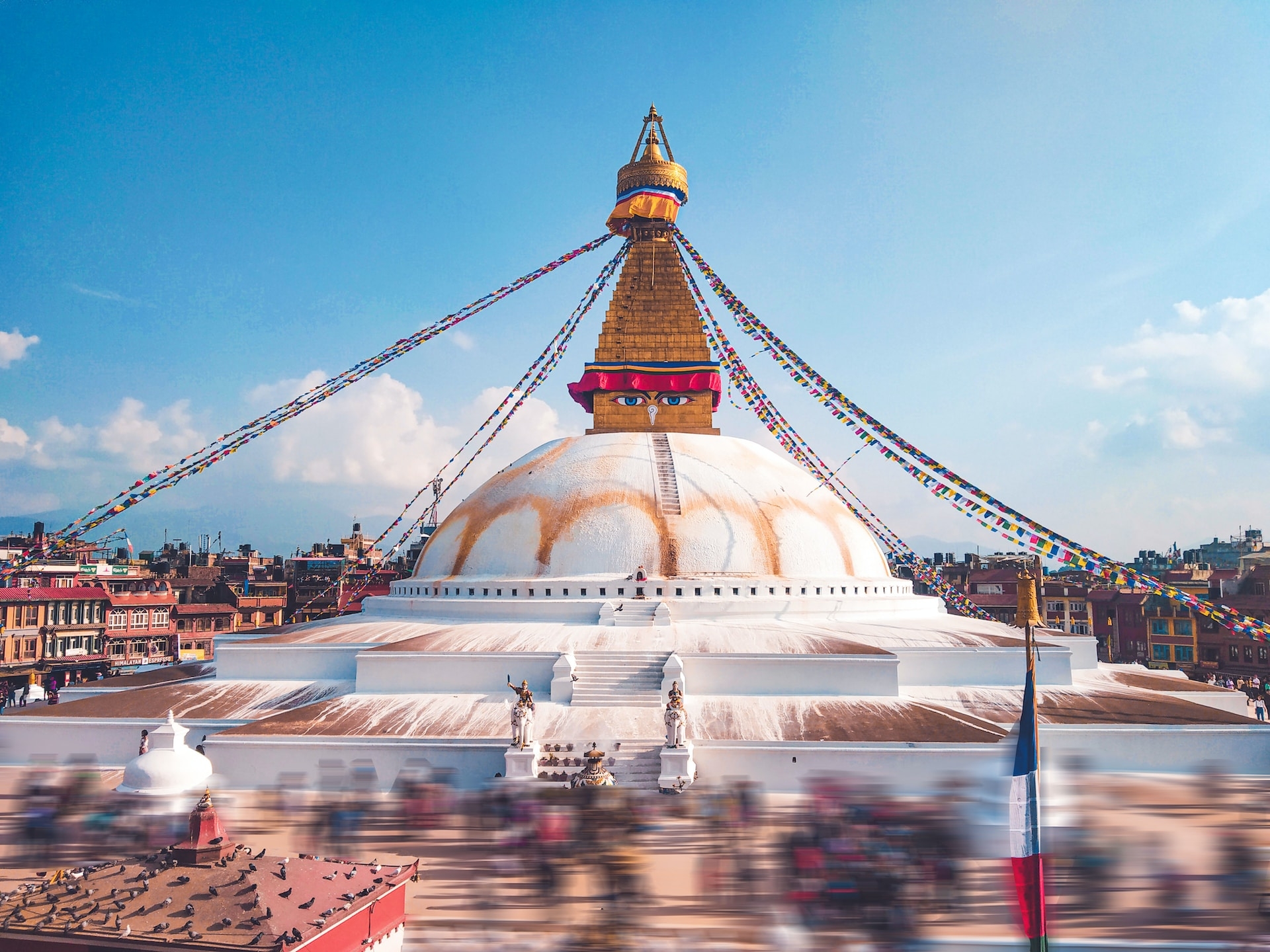| No of people | Price per person |
|---|---|
| 1 - 1 | $1,305 |
| 2 - 4 | $1,120 |
| 5 - 9 | $1,100 |
| 10 - 15 | $1,080 |
| 16 - 20 | $1,060 |





































On your final trekking day, you’ll descend back to Lukla, completing the trek with a sense of accomplishment. The trail winds through charming villages and lush forests, taking about 6-7 hours. Once in Lukla, celebrate your journey with your team over a farewell dinner, reminiscing about the incredible experiences shared along the way.



After breakfast, catch a morning flight back to Kathmandu. Enjoy the scenic aerial views of the Himalayas once more as you descend into the valley. Upon arrival, you’ll be transferred to your hotel, where you can relax and freshen up. Spend the rest of the day exploring the vibrant markets and streets of Thamel, or simply unwind after your trek.



On your final day, take some time for last-minute shopping or sightseeing in Kathmandu. Depending on your flight schedule, you’ll be transferred to the airport for your departure. Bid farewell to the incredible landscapes and experiences of your Everest Base Camp trek with Himalayan Discovery Trek, taking home unforgettable memories of your adventure. Safe travels!
The Everest Base Camp trek was a once-in-a-lifetime experience. The views were breathtaking, and the Sherpa people were incredibly hospitable. Our guide was knowledgeable and made sure we were safe and comfortable throughout the trek. Highly recommend!
This trek was challenging but so rewarding. The scenery was stunning, and reaching Everest Base Camp was an unforgettable moment. The accommodations were comfortable, and the food was great. Our guide and porters were excellent and really made the trip special.
Miscellaneous
The Everest Base Camp Trek is a stunning journey through the Khumbu region of Nepal, leading adventurers to the base of the world's highest peak, Mount Everest. Over approximately 12-15 days, trekkers experience breathtaking landscapes, rich Sherpa culture, and the thrill of standing at 5,364 meters (17,598 feet) at Everest Base Camp.
The ideal seasons for trekking to Everest Base Camp are spring (March to May) and autumn (September to November). During these months, the weather is generally stable, and trekkers can enjoy clear skies and moderate temperatures. Winter can be extremely cold, while the monsoon season (June to August) brings heavy rainfall, making trekking conditions challenging.
While the Everest Base Camp Trek is accessible to trekkers of varying fitness levels, a moderate level of fitness is recommended. Training before your trek, such as hiking, walking, or engaging in cardiovascular exercises, will help you acclimatize and enjoy the journey. It's essential to be prepared for long days of walking on rugged terrain.
Preparation for the Everest Base Camp Trek involves physical training, gathering appropriate gear, and understanding the trekking route. We recommend investing in high-quality trekking boots, warm clothing, and sleeping bags suitable for high altitudes. Additionally, familiarize yourself with altitude sickness symptoms and hydration strategies.
While it's possible to trek to Everest Base Camp independently, we strongly recommend hiring a guide and porter for safety and support. Our experienced guides at Himalayan Discovery Trek are well-versed in the region and can enhance your experience by sharing their knowledge of the culture and environment. A porter can help carry your gear, allowing you to focus on the trek itself.
During the trek, accommodations typically consist of tea houses, which provide basic yet comfortable lodging. Rooms are shared and usually feature twin beds. Most tea houses offer meals, and our guides can recommend places to eat that serve delicious local and international cuisine.
Yes, trekking in the Everest region is generally safe, especially when traveling with a reputable company like Himalayan Discovery Trek. Our guides are trained in first aid and are familiar with the terrain. We also monitor weather conditions and help trekkers acclimatize to minimize the risk of altitude sickness.
To trek to Everest Base Camp, you'll need a TIMS (Trekker's Information Management System) card and a Sagarmatha National Park entry permit. Himalayan Discovery Trek will assist you in obtaining these permits, ensuring a smooth start to your adventure.
While the Everest Base Camp region has limited connectivity, Wi-Fi is available in some tea houses and villages, albeit at an additional cost. For urgent communications, you can also hire a local SIM card, but be prepared for intermittent service as you ascend into higher altitudes.
The cost of the trek varies based on the itinerary, duration, and services included. Our packages typically encompass accommodation, meals, guide and porter fees, permits, and transportation to and from Kathmandu. We recommend checking our website or contacting us directly for detailed pricing and package options.
